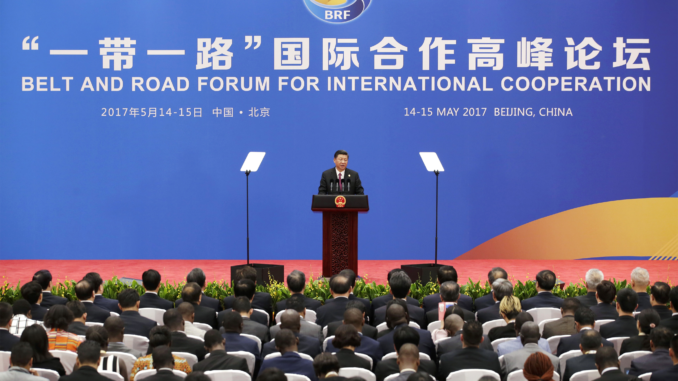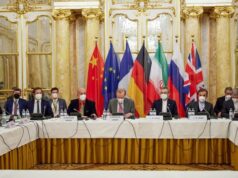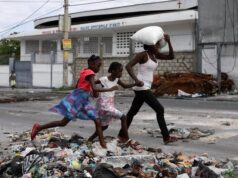Belt And Road Initiative Is Cracking! it Has Been Galwanized Completely

China has spent an estimated $200 billion of the estimated $1.2-1.3 trillion investment gap on infrastructure development under the BRI
The Wuhan Virus struck a lightening bolt against the $ 60 billion China-Pakistan Economic Corridor (CPEC) and halted the ill fated Project completely. How and when Pakistan will be able to emerge from the ensuing economic slavery is now a moot point.
The Virus has also affected Cambodia’s Sihanoukville Special Economic Zone, the Payra power plant in southern Bangladesh, and the Port City development project in western Sri Lanka.
Even before the world wide pandemic wreaked havoc on supply chains and imposed travel bans on Chinese workers, many of China’s BRI projects especially in Africa were coming under scrutiny.
African Countries have already called for $100 billion in bailouts and debt relief to help them cope with the devastating effects of the pandemic. Figures available from various Research Forums indicates that China lent over $143 billion to African countries between 2000 and 2017.
In South Asia, the Maldives is renegotiating its debt to China while Bangladesh has told China that it will be deferring payments. Although China has previously agreed to write off debts it has done so in a unilateral non-transparent manner with no international oversight.
As lockdowns lift globally, infrastructure projects will resume operations, however, the capital which funds the construction will be scanty.
The Chinese economy has contracted by more than 6.8 percent in the first quarter of 2020, with a slowdown already underway. Beijing will now find it difficult to manage new investments. It has to first prioritize mitigating the financial impact of the virus and resolving the trade war with the United States.
The Galwan intrusion by the PLA is also going to cost the Chinese economy very dearly as now India has decided to decouple itself from Chinese economy. So rolling out new overseas infrastructure projects will no longer be a matter of fact for Beijing. BRI projects may have to be shelved at least for the time being and they will most certainly be plagued by various factors..
China was known for its Authoritarianism, Overpopulation, Expansionism, and Patent infringement. The most recent addition has been Human Rights violations in Tibet and the Chinese concentration camps for Uighurs.
For a make over of its image, the Chinese launched the Belt Road Initiative (BRI) formerly known as the ‘One Belt One Road’ (OBOR). The BRI was announced by the Chinese President Xi Jinping in 2013, as an Economic and Maritime Silk Road.
This multi-faceted project Comprises infrastructure connectivity, investment and trade cooperation, financial integration, cultural exchange, and regional cooperation between Asia, Europe, Africa, and Latin America.
The planned scale of the BRI was enormous covering 70 percent of the world population and the cumulative gross domestic product (GDP) of around $21 trillion. The projected cost of the BRI was estimated at $1.2–1.3trillion by 2027 as predicted by Morgan Stanley, making BRI the most expensive and expansive International infrastructure project ever taken.
The modern-day BRI wanted to mirror the ancient Silk Road; a vast network of routes used by traders to carry goods between the Eastern and Western civilizations.
In comparison, the modern-day Silk Road was to become a comprehensive set of infrastructure development projects spanning across 140 countries including China.
This unprecedented reach would have made the BRI an indispensable tool of the Chinese Foreign Policy; helping China to garner support on multilateral forums.
The Chinese had expected wide acceptance of the BRI is due to its multi-dimensional nature offering Chinese cooperation in Digital, Space, Arctic, Maritime, and overland connectivity.
This consortium of connectivity projects in crucial sectors would have created the perfect environment for China’s dominance over global trade, giving it an unchecked level of influence and leverage.
China has already spent an estimated $200 billion of the estimated $1.2-1.3 trillion investment gap on infrastructure development under the BRI. The calculated funding of the BRI projects has been done cleverly by the Chinese financial institutions which operate through four distinct channels; policy banks, state-owned banks, international financing institutions, and sovereign wealth funds including the Silk Road Fund with a market capitalization of $40 billion.
All the above has now virtually gone down the drain. Why ? Because firstly India refused to participate in this project, point blank. At first the Chinese thought that this was if no consequences but after the Wuhan Virus attack, the Chinese have realized their enormous mistake.
Their CPEC linking China with Gwadar Port in occupied Baluchistan also grossly violates the Sovereignty of India, as the Corridor passes through the Pakistan occupied Indian territory of Kashmir.
The worldwide spread of the COVID-19 virus, has led to the BRI projects come to a screeching halt. Now the World has suddenly halted and changing its course has started heading towards a post-pandemic society, where the new rule book on International cooperation is yet to be scripted since the pre-Covid rules have been deemed irrelevant around the world.
The lockdown has led to revision of domestic and international policies by all the Countries. Most of the countries have started following India and have begun downgrading their relationships with China. In South Asia, Pakistan has been nearly enslaved economically. However Sri Lanka, Bangladesh, and the Maldives have woken up in time. Nepal still seems to be in two minds.
Earlier in 2017, China had received support from the WHO for its involvement in Public health at the Belt and Road Forum for Health Cooperation. However, with the origin of the virus being in China and the mishandling by the WHO at the early stage of the virus, nations have developed a sense of resentment towards WHO and China. As a consequence, countries have been looking for an alternative to Chinese testing kits, expertise and medicines to combat the Wuhan Virus.




